Predictions & Data for this entry
| Model: std | climate: MB | migrate: Mo | phylum: |
| COMPLETE = 2.7 | ecozone: MAW | food: biCi | class: |
| MRE = 0.103 | habitat: 0iMr, 0iMcd | gender: D | order: |
| SMSE = 0.026 | embryo: Mnm | reprod: O | family: |
Zero-variate data
| Data | Observed | Predicted | (RE) | Unit | Description | Reference |
|---|---|---|---|---|---|---|
| ah | 30 | 30.47 | (0.01567) | d | age at hatch | Wiki |
| ap | 1058 | 1146 | (0.08275) | d | age at puberty | MensStep2001 |
| am | 7300 | 7317 | (0.002283) | d | life span | guess |
| Lb | 1.55 | 1.395 | (0.09992) | cm | total length at birth | gma |
| Lp | 25 | 21.82 | (0.1271) | cm | total length at puberty | PalaSara2001 |
| Li | 43.2 | 46.58 | (0.07817) | cm | ultimate total length | fishbase |
| Wwi | 2200 | 2145 | (0.02487) | g | ultimate wet weight | fishbase |
| RL | 3.288 | 3.169 | (0.03607) | #/d | reprod rate L = 34.5 cm | PalaSara2001 |
Uni- and bivariate data
| Data | Figure | Independent variable | Dependent variable | (RE) | Reference |
|---|---|---|---|---|---|
| tL_19 | 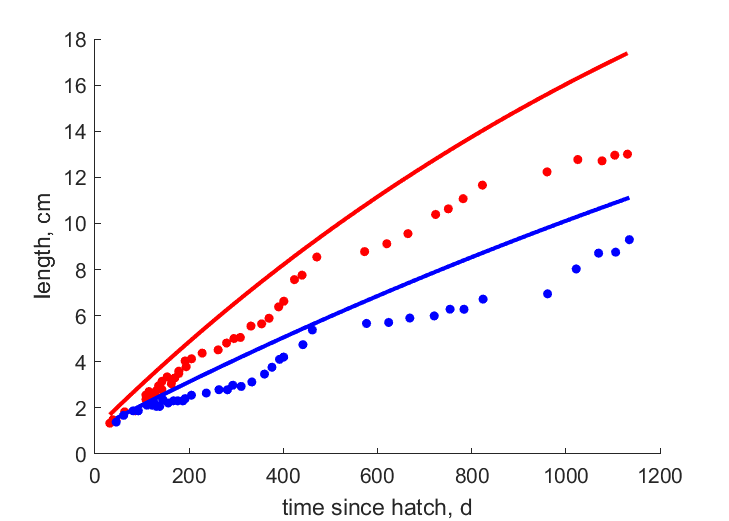 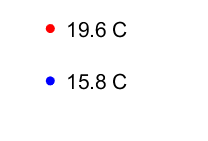 | time since hatch | length | (0.2603) | MensStep2001 |
| tL_15 |   | time since hatch | length | (0.2476) | MensStep2001 |
| tW_19 |  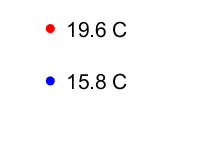 | time since hatch | wet weight | (0.08981) | MensStep2001 |
| tW_15 |   | time since hatch | wet weight | (0.1747) | MensStep2001 |
| LW | 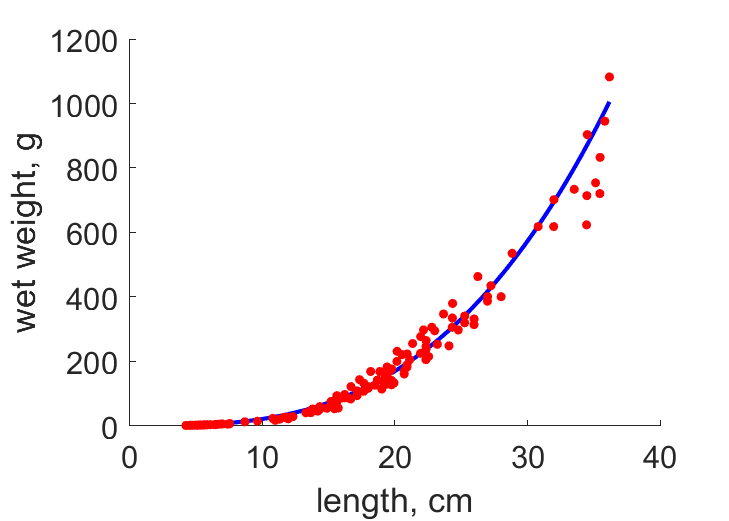 | length | wet weight | (0.1247) | SwarEnge1968 |
| tL | 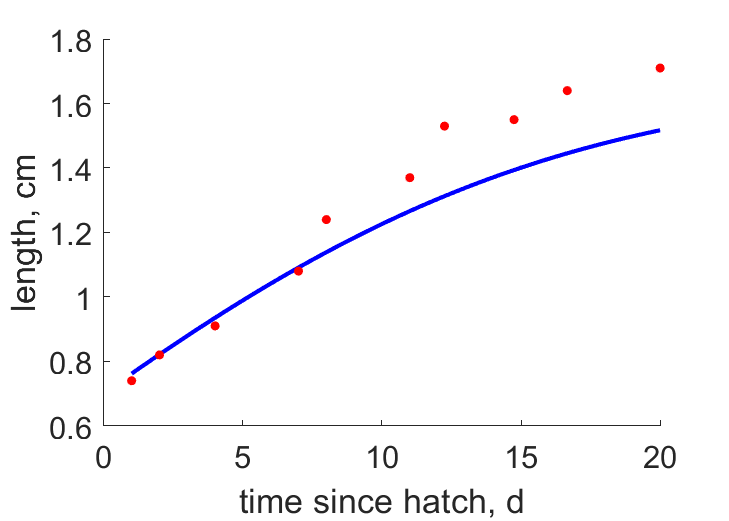 | time since hatch | length | (0.08152) | Dove1960 |
Pseudo-data at Tref = 20°C
| Data | Generalised animal | Opsanus tau | Unit | Description |
|---|---|---|---|---|
| v | 0.02 | 0.0346 | cm/d | energy conductance |
| kap | 0.8 | 0.4961 | - | allocation fraction to soma |
| kap_R | 0.95 | 0.95 | - | reproduction efficiency |
| p_M | 18 | 16.97 | J/d.cm^3 | vol-spec som maint |
| k_J | 0.002 | 0.002 | 1/d | maturity maint rate coefficient |
| kap_G | 0.8 | 0.8 | - | growth efficiency |
Facts
- The species can live in very bad conditions and needs little food to live (Ref: Wiki)
- The sound-producing (sonic) muscles attached to its swimbladders are the fastest known vertebrate muscles. This is used to attract females. (Ref: Wiki)
- The male fertilizes the egg; they hatch after approximately one month;When the eggs hatch the young toadfish stay attached to the yolk for some time.When the yolk has been absorbed for energy, the young toadfish learn to swim. Even when the young have started to swim the adult still protects its young. (Ref: Wiki)
- There is a large open pit of unknown function in the axil of each pectoral fin. (Ref: gma)
- huge yolk sac at hatch for development from hatch to birth (Ref: Dove1960)
Bibliography